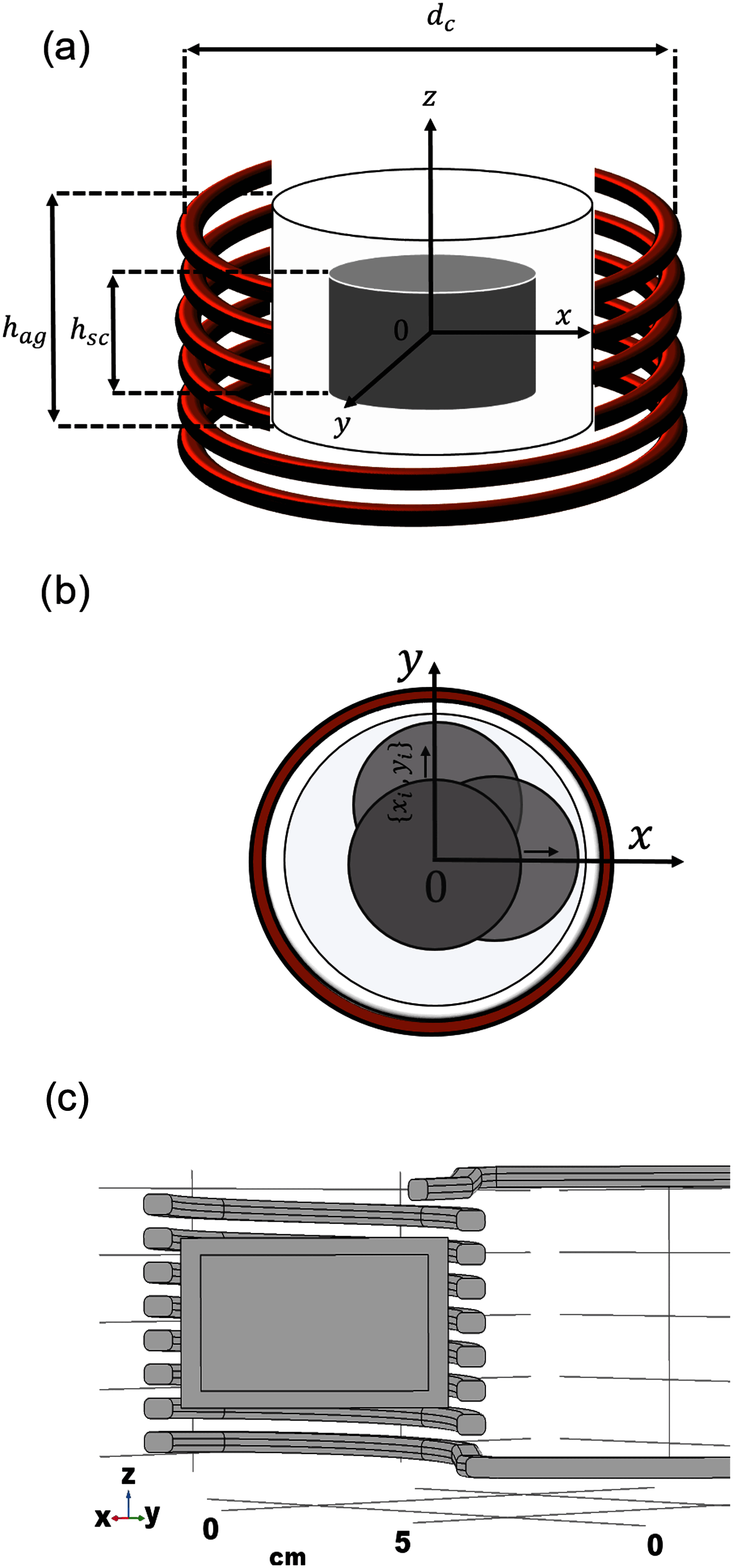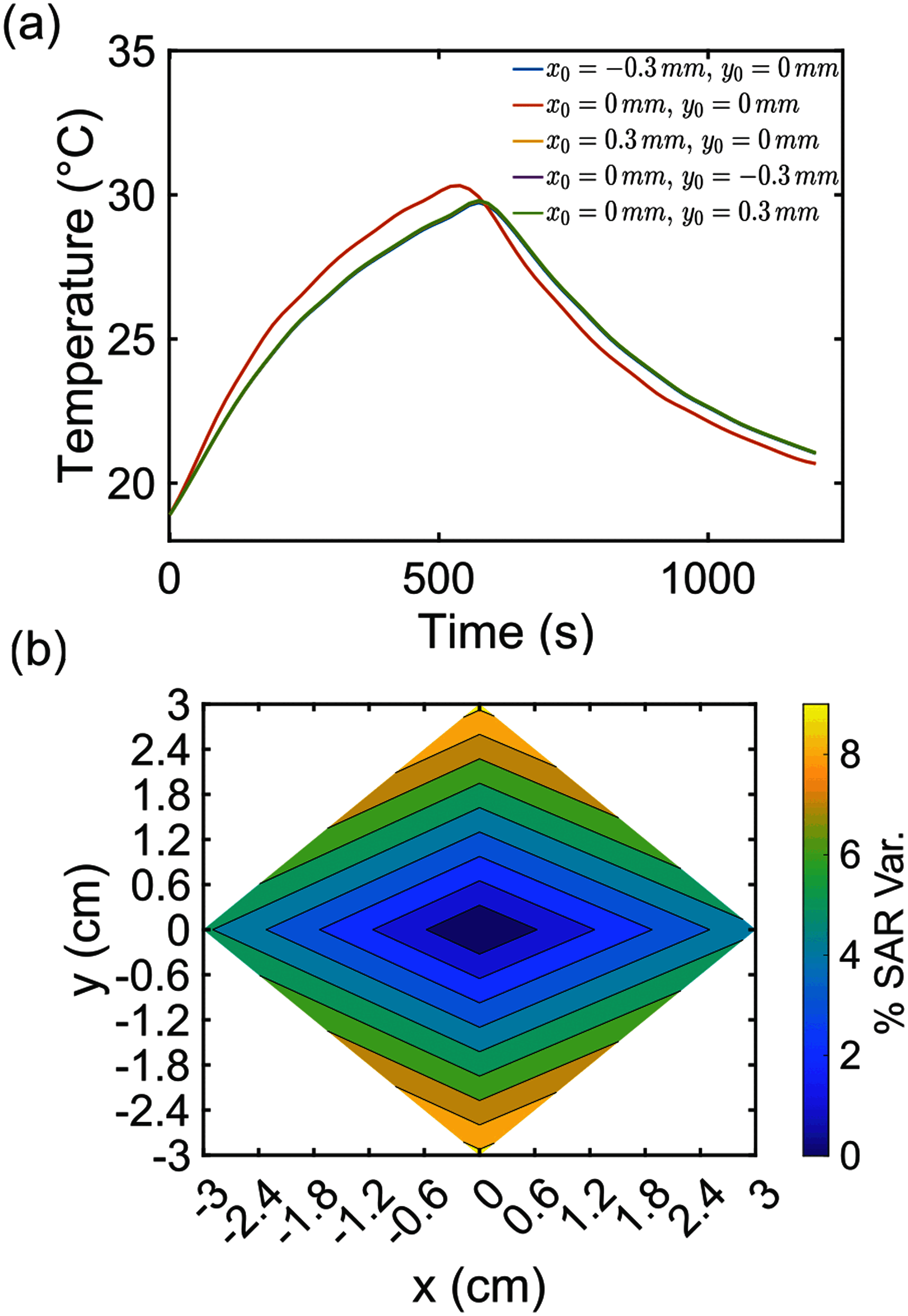On the Evaluation of the Hyperthermic Efficiency of Magnetic Scaffolds
- PMID: 38487100
- PMCID: PMC10939335
- DOI: 10.1109/OJEMB.2023.3304812
On the Evaluation of the Hyperthermic Efficiency of Magnetic Scaffolds
Abstract
Goal: Deep-seated tumors (DST) can be treated using thermoseeds exposed to a radiofrequency magnetic field for performing local interstitial hyperthermia treatment (HT). Several research efforts were oriented to the manufacturing of novel biocompatible magnetic nanostructured thermo-seeds, called magnetic scaffolds (MagS). Several iron-doped bioceramics or magnetic polymers in various formulations are available. However, the crucial evaluation of their heating potential has been carried out with significantly different, lab specific, variable experimental conditions and protocols often ignoring the several error sources and inaccuracies estimation. Methods: This work comments and provides a perspective analysis of an experimental protocol for the estimation methodology of the specific absorption rate (SAR) of MagS for DST HT. Numerical multiphysics simultions have been performed to outline the theoretical framework. After the in silico analysis, an experimental case is considered and tested. Results: From the simulations, we found that large overestimation in the SAR values can be found, due to the axial misplacement in the radiofrequency coil, while the radial misplacement has a lower impact on the estimated SAR value. Conclusions: The averaging of multiple temperature records is needed to reliably and effectively estimate the SAR of MagS for DST HT.
Keywords: Heating evaluation protocol; hyperthermia; magnetic biomaterials; specific absorption rate.
© 2023 The Authors.
Figures







Similar articles
-
Design and Assessment of a Novel Biconical Human-Sized Alternating Magnetic Field Coil for MNP Hyperthermia Treatment of Deep-Seated Cancer.Cancers (Basel). 2023 Mar 8;15(6):1672. doi: 10.3390/cancers15061672. Cancers (Basel). 2023. PMID: 36980560 Free PMC article.
-
In silico assessment of collateral eddy current heating in biocompatible implants subjected to magnetic hyperthermia treatments.Int J Hyperthermia. 2021;38(1):846-861. doi: 10.1080/02656736.2021.1909758. Int J Hyperthermia. 2021. PMID: 34074196
-
Magnetic fluid hyperthermia simulations in evaluation of SAR calculation methods.Phys Med. 2020 Mar;71:39-52. doi: 10.1016/j.ejmp.2020.02.011. Epub 2020 Feb 20. Phys Med. 2020. PMID: 32088564
-
Thermoseeds for interstitial magnetic hyperthermia: from bioceramics to nanoparticles.J Phys Condens Matter. 2013 Dec 4;25(48):484003. doi: 10.1088/0953-8984/25/48/484003. J Phys Condens Matter. 2013. PMID: 24200980 Review.
-
Accuracy of available methods for quantifying the heat power generation of nanoparticles for magnetic hyperthermia.Int J Hyperthermia. 2013 Dec;29(8):739-51. doi: 10.3109/02656736.2013.826825. Epub 2013 Sep 3. Int J Hyperthermia. 2013. PMID: 24001056 Review.
Cited by
-
Composite Magnetic Filaments: From Fabrication to Magnetic Hyperthermia Application.Micromachines (Basel). 2025 Mar 12;16(3):328. doi: 10.3390/mi16030328. Micromachines (Basel). 2025. PMID: 40141937 Free PMC article.
References
-
- Miller K. D. et al., “Cancer treatment and survivorship statistics 2016,” CA: A Cancer J. Clinicians, vol. 66, no. 4, pp. 271–289, 2016. - PubMed
-
- Hurwitz M. and Stauffer P., “Hyperthermia, radiation and chemotherapy: The role of heat in multidisciplinary cancer care,” Seminars Oncol., vol. 41, no. 6, pp. 714–729, 2014. - PubMed
LinkOut - more resources
Full Text Sources
Miscellaneous

